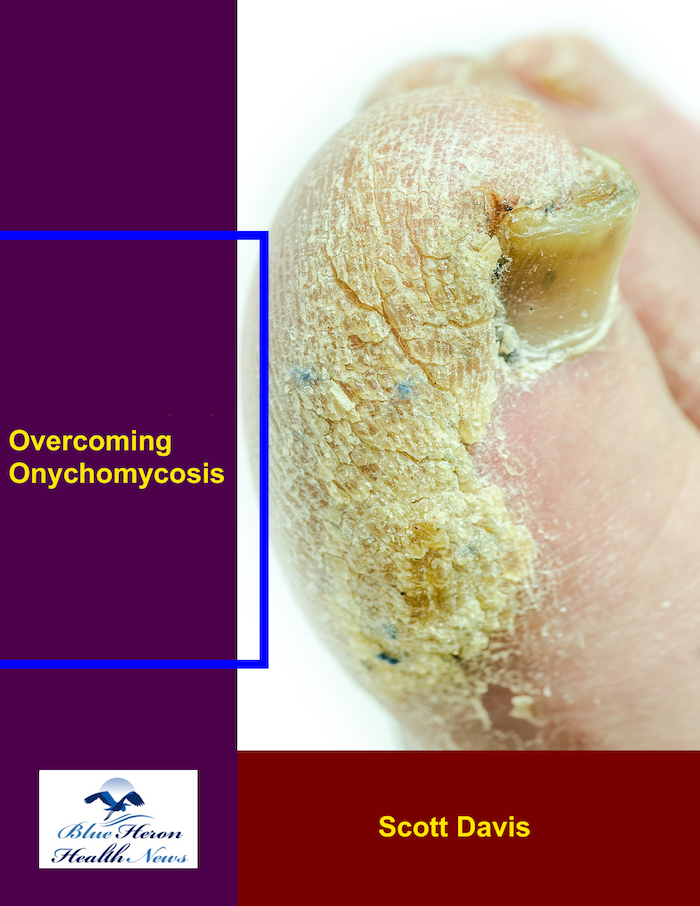
Overcoming Onychomycosis™ By Scott Davis If you want a natural and proven solution for onychomycosis, you should not look beyond Overcoming Onychomycosis. It is easy to follow and safe as well. You will not have to take drugs and chemicals. Yes, you will have to choose healthy foods to treat your nail fungus. You can notice the difference within a few days. Gradually, your nails will look and feel different. Also, you will not experience the same condition again!
What are the visual signs of onychomycosis?
Onychomycosis (fungal nail infection) has several characteristic visual signs that help in its diagnosis. The appearance of the affected nail can vary depending on the type and severity of the infection. Common visual signs include:
1. Discoloration
- Yellowing or Brownish Tint: The infected nail may appear yellow, brown, or white due to the accumulation of fungal debris under the nail.
- White or Yellowish Spots: The infection often begins with small white or yellow spots on the surface of the nail, which gradually spread as the infection worsens.
2. Thickened Nails
- The affected nails may become thicker than usual. This thickening occurs as the fungal infection causes the nail to become more rigid and distorted. The nail may be difficult to trim or may look bulky.
3. Brittleness and Crumbling
- Infected nails may become brittle, fragile, or crumbly. They may easily break or split when pressure is applied, and the nail may have a rough texture.
4. Separation from the Nail Bed (Onycholysis)
- The nail may begin to separate from the nail bed as the infection spreads. This is known as onycholysis, and the gap between the nail and nail bed may accumulate debris or fungal material. The separation can lead to pain or discomfort, especially if the nail gets caught on something.
5. Deformity or Distortion of the Nail
- As the infection progresses, the shape of the nail may change, becoming distorted or abnormally shaped. The nail may become ridged, curled, or appear shrunken.
6. Foul Odor
- In some cases, the infected nail may emit a foul or unpleasant odor, especially if there is a significant accumulation of fungal debris or pus under the nail.
7. Subungual Debris
- You may notice white, yellow, or brownish debris under the affected nail. This is often a combination of dead skin cells, fungal material, and keratin that the fungus has broken down.
8. Nail Splitting or Cracking
- The edges of the infected nail may begin to split or crack, which can make the nail even more vulnerable to further infection or injury.
9. Nail Fragility and Pain
- The nail may become painful, especially if it has lifted from the nail bed or is thickened and puts pressure on surrounding tissues. In more severe cases, pain may be noticeable when wearing shoes or walking.
10. Appearance of Multiple Nails
- Onychomycosis often affects more than one nail, particularly in the toenails. When it affects multiple nails, the infection may present in a symmetrical pattern across the toes or fingernails.
Visual Indicators by Type of Infection:
- Distal Subungual Onychomycosis (the most common type): The infection starts at the tip of the nail (distal end) and progresses toward the base. This typically leads to thickening, discoloration, and onycholysis.
- Proximal Subungual Onychomycosis: This less common form starts near the base of the nail (closer to the cuticle). It is often seen in people with immunocompromised conditions.
- White Superficial Onychomycosis: This type causes the surface of the nail to appear chalky white, with thin, powdery patches or spots on the nail plate.
- Candidal Onychomycosis: This infection, caused by Candida yeast, typically leads to the nails becoming red, swollen, and painful with a shiny appearance.
Conclusion:
The visual signs of onychomycosis can vary, but they generally involve nail discoloration, thickening, brittleness, and separation from the nail bed. These signs help differentiate fungal infections from other nail conditions. If you notice any of these symptoms, it’s important to seek medical evaluation for an accurate diagnosis and appropriate treatment.
Overcoming Onychomycosis™ By Scott Davis If you want a natural and proven solution for onychomycosis, you should not look beyond Overcoming Onychomycosis. It is easy to follow and safe as well. You will not have to take drugs and chemicals. Yes, you will have to choose healthy foods to treat your nail fungus. You can notice the difference within a few days. Gradually, your nails will look and feel different. Also, you will not experience the same condition again!